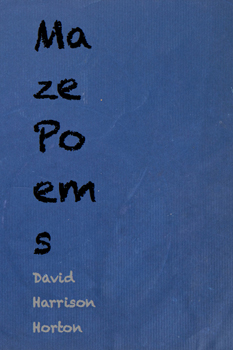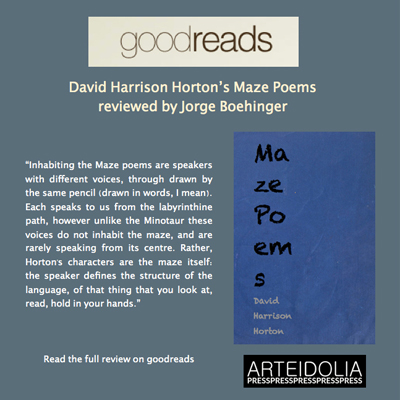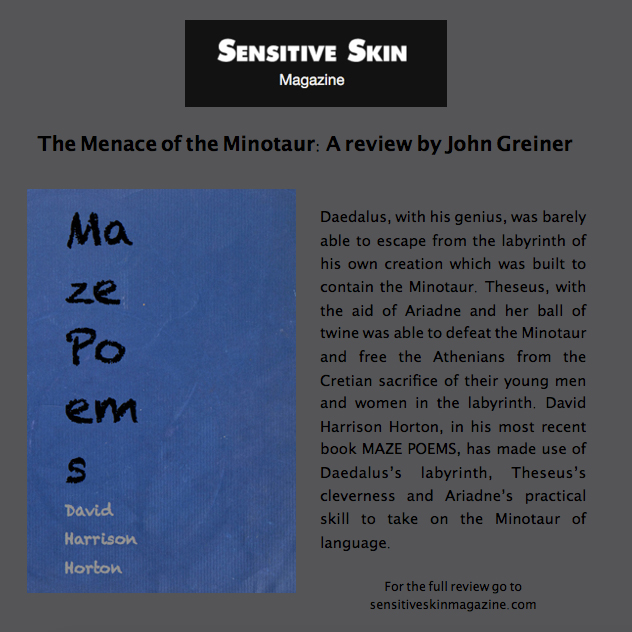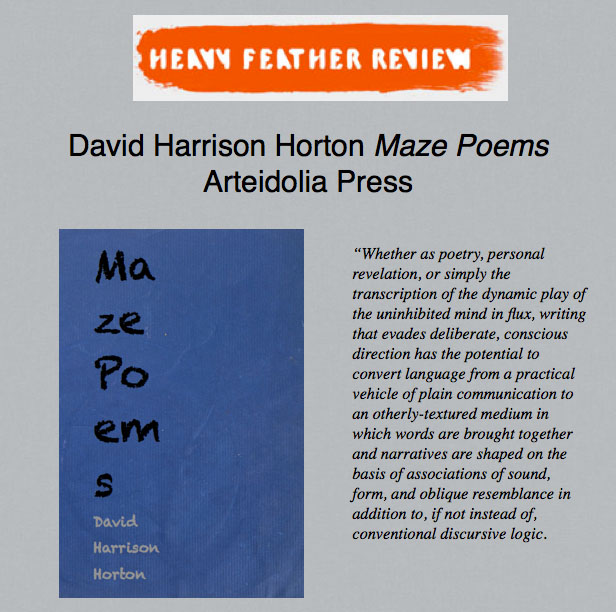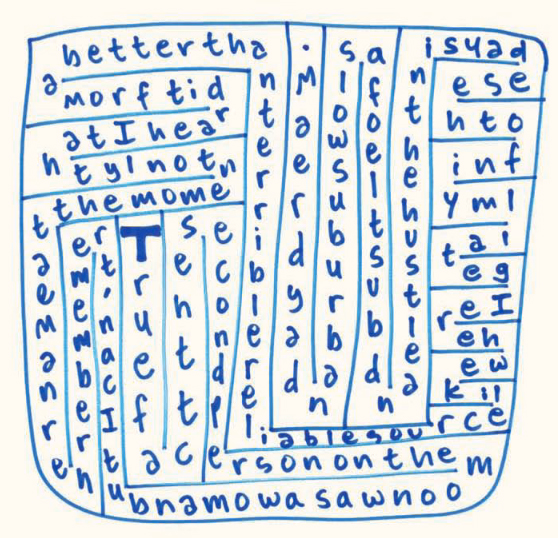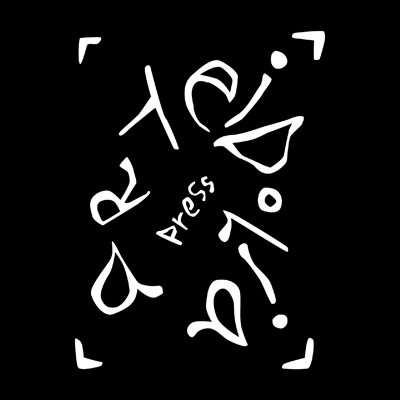Maze Poems by David Harrison Horton
TO ORDER MAZE POEMS CLICK HERE→
Maze Poems by David Harrison Horton blend Montaigne-esque essay with the surrealist practice of automatic writing. The thought and language of each fit within a visual maze format, literally the shape of that thought. Or rather, each thought fits the shape of its maze.
“David Harrison Horton has successfully slowed down the reading experience and made it deliberate, the charms of the poems reveal themselves when you take the time to unlock them, but these phrases and images lock themselves away again even before you have finished reading the poem. This makes for a challenging reading experience, but a challenge necessitated by a bold and inventive new format.”
– Eyad Darras from Canonical Podcast
Maze Poems – David Harrison Horton – Arteidolia Press 2022 →
REVIEW IN GOODREADS
“Inhabiting the Maze poems are speakers with different voices, through drawn by the same pencil (drawn in words, I mean). Each speaks to us from the labyrinthine path, however unlike the Minotaur these voices do not inhabit the maze, and are rarely speaking from its centre. Rather, Horton’s characters are the maze itself: the speaker defines the structure of the language, of that thing that you look at, read, hold in your hands.”
READ THE FULL REVIEW ON GOODREADS →
INTERVIEW ON periodicities: a journal for poetry and poetics
“Do you have any theoretical concerns behind your writing? What kinds of questions are you trying to answer with your work? What do you even think the current questions are?
With Maze Poems, I was looking at automatic writing and the line between subconscious and conscious thought and the literal, physical, visual shape of those thoughts. I was also very interested in how reader processing inputs meaning to a text.
With most projects, whether writing or art or music or whatever, I’m often looking to see what would happen if I monkeyed with this or that? If I torqued something here or loosened it there, would it be interesting? Why or why not?”
REVIEW IN SENSITIVE SKIN
“Daedalus, with his genius, was barely able to escape from the labyrinth of his own creation which was built to contain the Minotaur. Theseus, with the aid of Ariadne and her ball of twine was able to defeat the Minotaur and free the Athenians from the Cretian sacrifice of their young men and women in the labyrinth. David Harrison Horton, in his most recent book MAZE POEMS, has made use of Daedalus’s labyrinth, Theseus’s cleverness and Ariadne’s practical skill to take on the Minotaur of language.”
READ THE FULL REVIEW IN SENSITIVE SKIN →
REVIEW IN HEAVY FEATHER
“Whether as poetry, personal revelation, or simply the transcription of the dynamic play of the uninhibited mind in flux, writing that evades deliberate, conscious direction has the potential to convert language from a practical vehicle of plain communication to an otherly-textured medium in which words are brought together and narratives are shaped on the basis of associations of sound, form, and oblique resemblance in addition to, if not instead of, conventional discursive logic. David Harrison Horton’s Maze Poems, a set of shaped texts produced by way of what the poet describes as a kind of automatic writing, read like the traces of a creative mind following its own path, wherever it happens to go.”
READ THE FULL REVIEW IN HEAVY FEATHER →
David Harrison Horton is a Beijing-based writer, artist, editor and curator. He is author of the chapbooks Pete Hoffman Days (Pinball) and BeiHai (Nanjing Poetry). He edits the poetry zine Saginaw.
David Harrison Horton’s website →
Maze Poems by David Harrison Horton
ISBN: 978-1-7369983-5-9
Published: July 2022
52 pages
$18
To order Maze Poems contact Arteidolia Press.
arteidolia[at]arteidolia.com
Introduction by David Harrison Horton
The maze poem as a form began with letters that I sent to friends in the early 2000s. In 2018, I bought a big blue sketchbook at a small shop and began to explore the form more systematically. Presented here is a selection drawn from that notebook.
The mazes are a form of automatic writing. They are composed in a single sitting: first the maze is drawn, then the text is written to fit the shape. As such, each represents the shape of a single train of thought. The resulting pieces are part poetry, part essay, and part visual art.
They are also intended to slow the reader down as one processes the words on the page. It’s a different way for a reader and the author to interact. I hope you will appreciate this purposeful manipulation of your routine pace, and think about how we connect with words and information, and how our approach to this inputs to their meaning.
To read a maze, start with the letter that is in bold and work your way through the maze. If we look at the first maze in this book, we start with the bold T, then work out “True fact” and following, so we get:
True fact the second person on the moon was a woman but I can’t remember her name at the moment only that I heard it from a better than terrible reliable source like where I get all my info these days in the hustle and bustle of a slow suburban daydream.
David Harrison Horton is available for poetry readings.
For a review copy or additional information contact Arteidolia Press.
arteidolia[at]arteidolia.com

